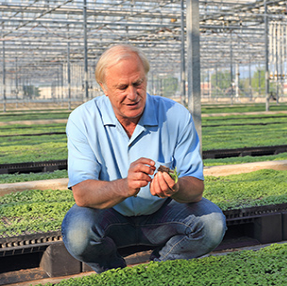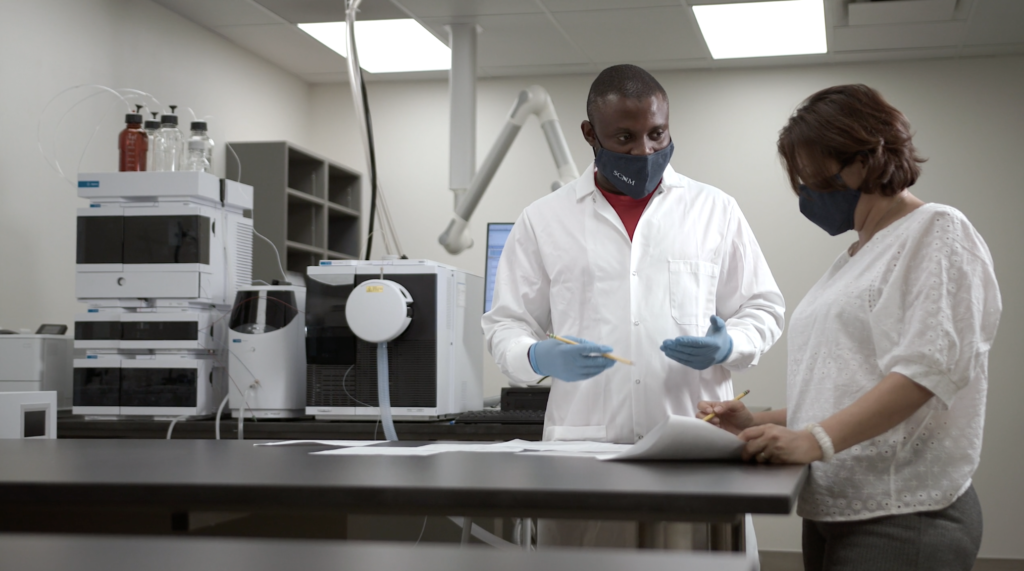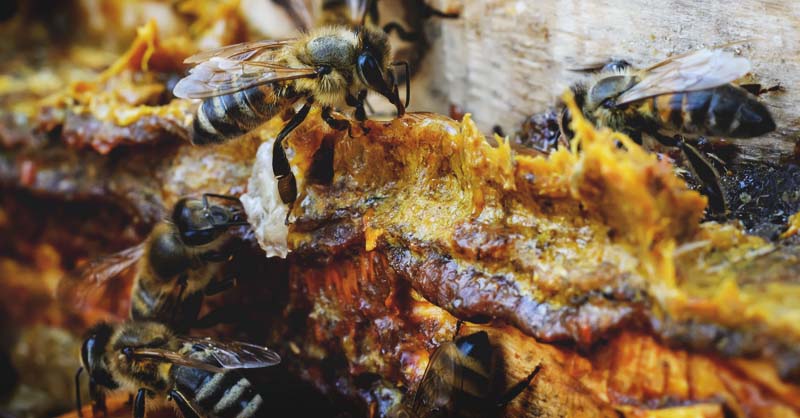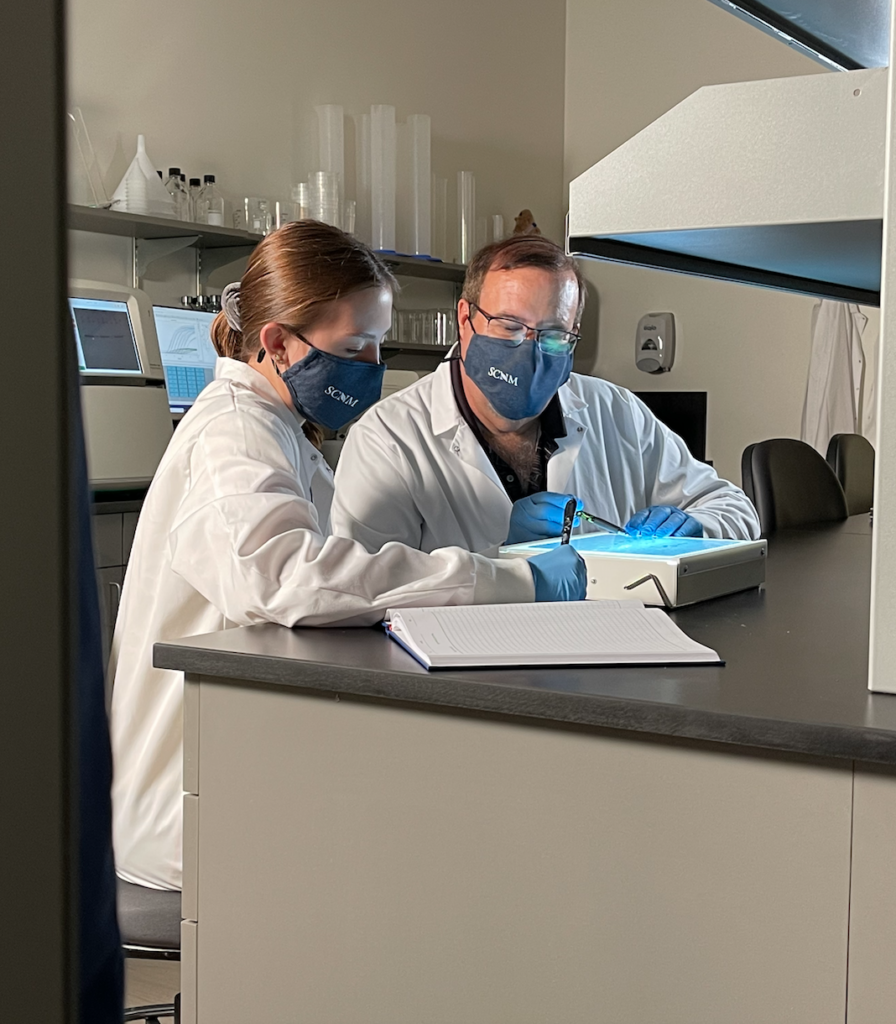
With an ambitious mandate to study botanical medicine “at the cellular, molecular, and cultural level to create novel botanical solutions that support people, plants, and planet,” the Ric Scalzo Institute for Botanical Research at Southwest College of Naturopathic Medicine aims to refine our understanding of herbs.
The new Institute is equipped with state-of-the-art analytical equipment, and staffed by experts from diverse disciplines who, working together, will increase scientific rigor in the study of herbs while honoring the traditional knowledge at the base of modern herbal medicine.
It’s a place where cutting edge phytochemical analysis is guided by deep ethnobotanical wisdom.
“The herbal industry is often criticized for the lack of evidence in botanical medicine,” says Bill Chioffi, VP of Strategic Partnerships & Business Development at the Institute, reflecting on mainstream medicine’s reflexive dismissal of herbs. “That’s why elevating the research and engaging future naturopaths, medical doctors, and natural products companies is so important.”
Funded by an unrestricted grant from Ric Scalzo, founder of the popular brand, Gaia Herbs, the Institute’s 4,385 square foot lab facility features a complete phytochemical characterization lab featuring liquid chromatography-mass spectrometry (LC-MS) technology for identification and quantification, as well as preparatory high-performance liquid chromatography, and low, medium, and high-pressure chromatographic separation instruments.

The Institute also has a molecular biology lab equipped with a darkroom for immunoflouorescent spectrometry, and a full suite of analytical technology for bioassays, including real time PCR, Elisa, Western Blot, and transcriptome profiling.
The Institute is licensed as a Biosafety Level 2 lab (BSL-2) for its viral culture lab, in which researchers can test the effects of various herbs against a host of human pathogens including MRSA, Borrelia, Influenza, Coronaviruses, Herpes, HIV, and others.
The new labs opened last Spring on the Tempe, Arizona campus of SCNM, which is soon to be re-named Sonoran University of Health Sciences.
Emphasis on Analysis
Jeffrey Langland, PhD, Director of Research at the center, is a molecular biologist/virologist, with decades of experience in both academia and pharmaceutical development. Consequently, molecular biology and pre-clinical basic research figure strongly into the new institute’s agenda.

Langland and his core team, which includes six PhDs, three ND-herbalists, and a pharmacist are working to elucidate the biochemical mechanisms by which phytochemicals exert their effects on human or microbial physiology.
Why do certain botanical compounds disrupt viral replication or kill certain bacteria? How do cannabinoids modulate pain? What drives the adverse effects seen with some herbs? How do phytochemicals affect human metabolism?
In answering questions like these, they hope to provide quantitative validation of traditional botanical medicine, Ayurveda, Chinese medicine, and modern naturopathy, while at the same time nurturing development of new and truly evidence-based herbal combinations.
“The herbal industry is often criticized for the lack of evidence in botanical medicine. That’s why elevating the research is so important.”
Bill Chioffi, VP of Strategic Partnerships & Business Development, Ric Scalzo institute for Botanical Research
The Scalzo Institute is part of the research department at SCNM. The college’s clinical faculty provides guidance, and the institute offers opportunities for SCNM students to participate in research projects. Simultaneously, the school’s on-site clinics will be sites for human pilot studies that can lay the groundwork for larger clinical studies.
The Institute is already collaborating with other institutions including the Arizona State University’s Biodesign Institute, the Botanical Dietary Supplements Research Center at the University of Mississippi, and the Susan Samueli Integrative Health Institute at University of California Irvine.
Clinical Relevance is Key
Scalzo Institute researchers have undertaken projects across a wide range of clinical themes, including:
- Phytochemical composition of commonly used medicinal herbs
- Impact of herbs on viral infections, including influenza, rhinovirus, herpes, papillomavirus, and coronavirus
- How herbs affect bacterial pathogens, as well as the normal microbiome
- Botanical interactions with the human immune system
- Elucidation of mechanisms of action for herbs that relieve pain, anxiety, and stress
- Validation of the in vitro activity of specific Cannabis chemovars
- Beneficial and Harmful Herb-Drug Interactions
The goal, Chioffi says, is to focus on topics relevant to human, and in some cases, animal health.
Among the team’s main objectives is to publish in prominent peer-reviewed journals, to present research at scientific conferences, and to educate scientists, practitioners, and the general public.

Beyond academia, there’s also a vision for translating basic research into useful products through partnerships with natural products companies. Chioffi says the Institute is developing multi-year research contracts with leading botanical supplement makers with the goal of developing evidence-based, patentable, and when appropriate, IP-protected ingredients and formulations.
With its emphasis on interdisciplinary collaboration, and its “petri dish to patient care” scope, the Scalzo Institute shares common features with the Nutrition Innovation Center established by Standard Process in Kannapolis, NC, several years ago.
Hot Projects
In its first year of operation, the Institute has already launched a number of projects many of which have led to clinically significant findings.
Bioactive Constituents in Echinacea & Potential Interactions with Pharmaceutical Ingredients: Plants in the genus Echinacea produce compounds that induce or inhibit cytochrome enzymes, P-glycoprotein, organic ions, and other transporter molecules. At the Institute, Susan Trapp, PhD & Narges Kiyani PhD, have been assessing how Echinacea-derived phytochemicals affect metabolism of commonly used drugs
For example, some Echinacea extracts can inhibit cytochrome P2A1, which will increase blood concentrations of caffeine when the herb is taken concomitantly with caffeine-containing beverages.
Cyclosporine, which has a narrow therapeutic window, is metabolized by several enzymes affected by Echinacea-derived compounds; therefore, it is best to avoid using Echinacea when taking this drug. But other drugs, like prednisone and azithromycin are not affected by this herb. To some extent the effect of Echinacea on drug metabolism depends on which part of the plant is used for the extract; roots seem to produce more compounds that affect cytochromes and transporter proteins than aerial parts.
Combatting Antibiotic-Resistant Bacteria with Propolis: Researchers Daniel Clark & Melissa Bellman have been studying the antimicrobial properties of propolis, the sticky resinous substance bees produce to maintain the structural integrity of their hives. Propolis also keeps hives pathogen-free, and it has long been promoted for human immune system support.
Though propolis is not a botanical in the strict sense, its biochemical composition derives largely from the plants on which the bees feed. Phytochemical constituents can vary widely from region to region.

The SCNM researchers tested 100% ethanol extractions of propolis from several US states, as well as from Canada, Russia, Brazil, Lithuania, Greece, Ukraine, and Bulgaria against three troublesome bugs: methicillin resistant Staphylococcus aureus (MRSA), carbapenem-resistant Klebsiella pneumoniae, and multi-drug resistant Pseudomonas aeruginosa.
At a 10-microliter dose level, propolis resulted in a one million-fold reduction in colonies of MRSA. With drug-resistent Klebsiella, a 30-microliter dose of propolis resulted in a 10 million-fold bacterial reduction, the SCNM team reports.
The Pseudomonas strain, which was resistant to ampicillin, cephalosporin, nitrofurantonin, and other drugs, was tougher. But it was still susceptible to the propolis extract. At a 30-microliter dose, there was a 1,000-fold drop in bacterial colonies. That might seem modest compared to the near eradication of MRSA and Klebsiella, but it is more or less the same level of antimicrobial activity as advertised for common hand sanitizer products.
The propolis extracts had similar activity against antibiotic-sensitive strains of the same pathogens.
Though this work is still very pre-clinical, it does have important implications given that
2.8 million people are affected with antibiotic-resistant bacteria every year, and roughly 35,000 die from them.
Botanical Synergies for SARS-CoV-2 Infection: Dr. Langland, who had considerable vaccine development experience prior to entering botanical research, heads a large project to screen herbs with potential antiviral properties, especially those that might be useful in combatting SARS-CoV-2.

Drawing largely from the Asian medical literature on use of herbs to treat the virus responsible for the 2004 SARS epidemic, he and his team compiled a list of 40 potential candidates that might be able to either directly inhibit SARS-CoV-2 or improve immune defenses. It included widely known herbs like Angelica, Artemisia, Camellia, Ginger, Cinnamon, as well as other less common ones.
Since the SCNM lab is not cleared to handle highly pathogenic viruses like SARS-CoV-2, Langland and colleagues collaborated with Arizona State University, which has a BSL-3 level lab.
For each of the plants in question, the researchers first tested 20% to 70% ethanol extracts in cell toxicity assays, to look at effects on healthy human cell cultures. This determines basic safety: if exposure to high doses of an herb has little effect on healthy cell cultures one can presume the herb is not cytotoxic to normal cells.
This was followed by viral plaque assays in which they apply the herbal extracts to cultures infected with SARS-CoV-2, to determine if the herbs can mitigate viral replication and spread.
“What we want to see is little (cyto)toxicity at high doses, but very low doses required for inhibition of virus replication,” Langland said. This Selectivity Index—a simple division of the cytotoxic dose by the viral inhibitory dose—”is really the best measure we have to evaluate a drug or botanical extract for in vitro antimicrobial effects.”
“Our goal is to use botanicals to target different steps in the replication process, to create a truly synergistic blend for inhibiting replication of these viruses.”
–Jeffrey Langland, PhD, Director of Research, Ric Scalzo Institute for Botanical Research
Most of the herbs on the original list turned out not to be effective antivirals. But five stood out: Houttuynia cordata (Fish mint); Scutellaria baicalensis (Skullcap); Chrysanthemum indicum (Indian Chrysanthemum); Camillia sinensis (Green Tea); and Salvia miltiorriza (Red sage).
All were highly effective in inhibiting SARS-CoV-2, with little cellular toxicity in normal cells. Some had broad spectrum activity against other coronavirus types as well.
Based on previously published work, the SCNM researchers identified proposed target sites and mechanisms by which these five herbs most likely exert their effects. Camellia, and Salvia appear to interfere with viral attachment to host cells. Chrysanthemum, Scutellaria, and Houttuynia inhibit viral transcription, enzymes in the replication process, or protein processing.
This raises the question of synergy: Can several herbs be combined to amplify the antiviral effect? In most of the world’s longstanding botanical traditions, that’s how herbs are used—in combination, not as single agents.
The short answer is, Yes.
Langland’s team developed a core combination, and then added various fourth herbs, assessing the combinations against SARS-CoV-2. They found they could markedly increase the inhibitory effects—sometimes by as much as five-fold over what would be predicted based on the profiles of the individual herbs.
“Our goal is to use botanicals to target different steps in the replication process, to create a truly synergistic blend for inhibiting replication of these viruses,” he said.
Artemisia annua (Wormwood) is another herb under intensive research at SCNM. Used widely worldwide to treat malaria, extracts of this herb are proving to be highly effective against SARS-CoV-2 in vitro. The effects are partially attributable to Artemisinin, a bioactive compound isolated from this plant in 1972 by Prof. Youyou Tu of the China Academy of Traditional Chinese Medical Sciences. For her discoveries, Dr. Tu was awarded the 2015 Nobel Prize in Physiology or Medicine.
Dr. Langland stressed that Artemisia produces many other compounds aside from artemisinin that may also contribute to its antiviral effects.
As SCNM’s researchers forge on with their projects, the Scalzo Institute is poised to become a major worldwide hub for the discovery and development of novel herbal formulas. Though none are yet ready for clinical prime-time, the potential is very clear.
END







